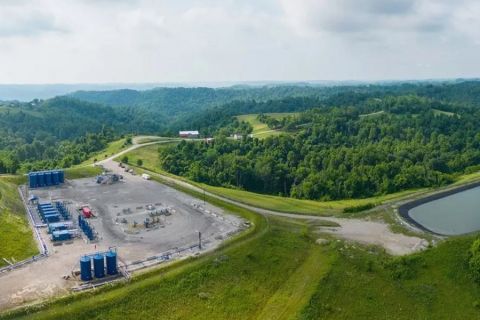Learn more about Hart Energy Conferences
Get our latest conference schedules, updates and insights straight to your inbox.
To help optimize reservoir stimulations, operators increasingly rely on mini-fracs, a small fracturing treatment performed ahead of the main stimulation job. Weatherford has introduced a new reservoir evaluation system (RES) tool that allows mini-frac operations to be performed in less time and at a lower cost while retaining the same valuable insight into the nature of the reservoir.
Conventionally, mini-fracs have been run off the drilling rig by pumping fluid into a packed-off section of the wellbore and measuring the pressure at which the formation begins to break down and allow fluid ingress. While mini-frac runs provide valuable insight into the pressures required to fracture the formation, their deployment from drilling rigs has proven costly and time-consuming. In addition, this method has been imprecise in its ability to measure formation breakdown pressure in a narrow window.
Wireline formation testers have been used for years as a mini-frac alternative to drilling rigs, but their tendency to pump fluids into the wellbore at erratic rates introduces uncertainty in the ultimate formation breakdown measurement.
Technology for tortuous paths
The evaluation tool is housed in a uniform 4.5-in. outside diameter body, which enables it to be run in smaller holes and tortuous well paths. Once the tool has arrived at its required location, either straddle packers or a high-articulation probe pad are deployed to maintain a tight seal against the wellbore during a measurement. This both lowers the risk of getting stuck and limits the operator’s exposure to a dropped signal during data acquisition.
The tool is deployed downhole via wireline, which also provides the power and telemetry necessary to place it in position. The pad conforms to the uneven and irregular surface of the wellbore wall for more accurate pressure readings up to 8,000 psi.
Once the tool has verified its seal against the wellbore via the wireline link to the surface, formation pressure evaluation begins by pumping pressurized fluid into the well. The RES pump has nearly twice the flow throughput of conventional formation tester pumps – approximately 0.7 gal/minute vs. 0.4 gal/minute – and pumps at a steady flow rate.
Further accuracy in pressure measurements is assured through the use of dual high-caliber quartz gauges, which represents a departure from the conventional technique that incorporates a strain gauge as a backup to a main quartz sensor. Because the tool provides these pressure data back to the surface as a test is under way, quality control evaluations of the data can be performed and corrections to the pumping rate made in near-real time.
Once the data are collected, the seal is terminated, and the tool is brought back to surface. As the pressure bleeds off from the test area, the miniature fractures created during the test seal off. This spot of local weakness will later be sealed with cement during the completion and will not be able to propagate and steal fracturing fluid. A cooperative engineering effort
A deeper level of formation insight is realized through close collaborative work between the operator’s logging unit personnel and technology field experts. This collaborative team uses proprietary algorithms and software to stream output to offsite stakeholders and decision-makers. Data sharing is performed in a fully transparent manner, enhancing the efficiency and accuracy of further well completion and stimulation decisions.
Further benefits are realized by integrating the tool with other wireline-deployed evaluation technologies designed specifically for smaller diameter wellbores.
Data analysis is another integral part of the evaluation system, designed to help the operator make decisions that impact the completion method, well spacing, and future field development. Typical pressure profile analyses conducted include identification of pore fluid type, estimation of pore fluid properties, estimation of fluid contacts and hydrocarbon column heights, quantification of depletion and overpressure, identification of hydrodynamic conditions, and investigation of lateral and vertical reservoir continuity and connectivity. In addition, petrochemical analysis provides estimates on formation permeability and high-resolution borehole temperature information.
Proving the potential
The technology was first successfully deployed in shale plays in North America to measure formation breakdown pressures and pinpoint the locations best suited for stimulation. Most recently, it was deployed for a client in Spain to identify suitable formations for COstorage as part of a feasibility study for a carbon capture and storage project. In particular, the client wanted to evaluate formation breakdown pressure to limit COingress to the rock, which is a necessity as EU environmental regulations limit fracturing activities.
The RES tool was deployed as part of an integrated suite of services to ensure the successful drilling, completion, and production of each well, although initially it was used to collect and analyze pressure-volume-temperature and water samples. As the project evolved, discussions between the operator and the service company’s personnel uncovered the potential for the tool to provide mini-frac evaluations. To date, the system has successfully completed eight mini-frac studies in four wells for the operator, with each study consisting of pressure-injection and leakdown cycles over a two-day period. Each well test fulfilled the client’s screening requirements and confirmed the tool’s ability to more precisely pinpoint formation breakdown pressure. Ultimately, the operator gained confidence in the tool’s ability to help plan future COinjection programs while complying with EU environmental guidelines.
The company is evaluating additional field applications, including the very tight rock formations of Australia’s coal seams. In particular, the tool can be used to obtain representative reservoir pressures in coalbed methane using a combination of precise drawdown and injection techniques. By performing a small fluid injection into the formation and letting it build back to its original state, the operator obtains the required pressure measurement more efficiently and in a shorter timeframe than with conventional measurement methods.
The tool also has potential use in new shale plays where historical knowledge about formation breakdown pressures does not exist. Gaining this upfront knowledge via the RES might allow field economics and frac stage design to be planned more accurately before frac trucks and other equipment are brought to the field. For example, instead of being forced to deploy frac plugs or packers at equally spaced intervals within the lateral, the information obtained by the new evaluation tool allows the operator to space packers at variable intervals to isolate and fracture those sections that are expected to yield the most production. Ultimately, this increases the probability of project success and helps the operator avoid the risk of deploying too few or too many frac trucks and incurring unnecessary costs.
Recommended Reading
Kimmeridge Withdraws SilverBow Deal to Focus on E&P’s ‘Broken’ Board
2024-04-16 - Investment firm Kimmeridge said it had withdrawn its offer to combine its Eagle Ford E&P with SilverBow Resources as it promotes a slate of independent directors for SilverBow’s board at the company’s May annual meeting.
The JF Petroleum Group Acquires General Contractor GE Goodson Service
2024-04-15 - Following the transaction, GE Goodson will operate as The JF Petroleum Group’s Midland branch on a go-forward basis.
EQT, Equinor Agree to Massive Appalachia Acreage Swap
2024-04-15 - Equinor will part with its operated assets in the Marcellus and Utica Shale and pay $500 million to EQT in exchange for 40% of EQT’s non-operated assets in the Northern Marcellus Shale.
Marketed: Foundation Energy 162 Well Package in Permian Basin
2024-04-12 - Foundation Energy Fund V-A has retained EnergyNet for the sale of a 162 Permian Basin opportunity well package in Eddy and Lea counties, New Mexico and Howard County, Texas.
Stonepeak, Dominion Energy to Partner on Virginia Offshore Wind Project
2024-02-22 - Stonepeak will acquire a 50% interest in Dominion Energy’s offshore wind project, which is expected to be the largest offshore wind farm in the U.S.




